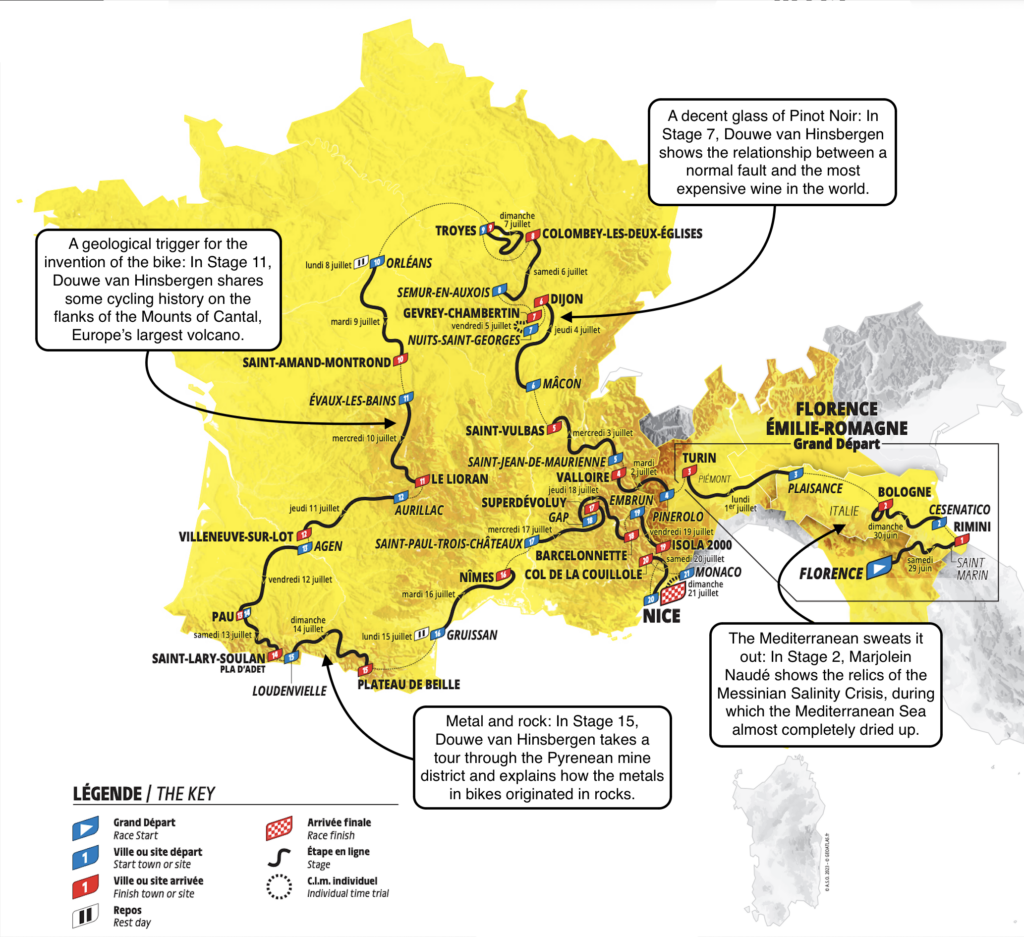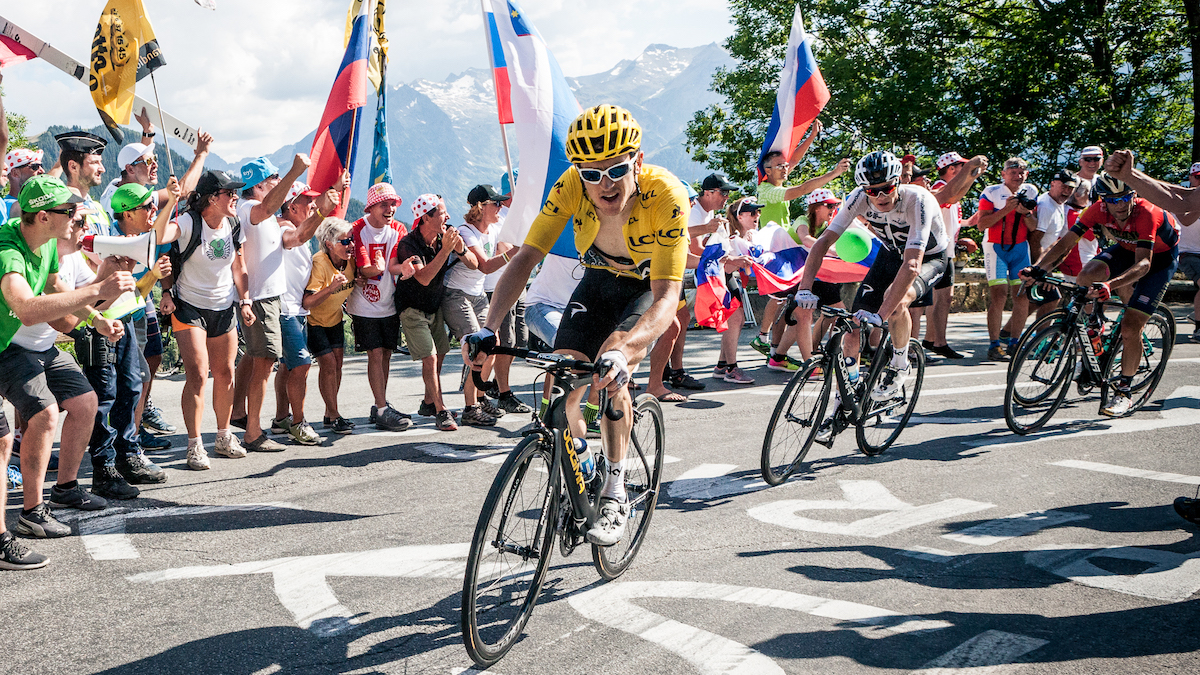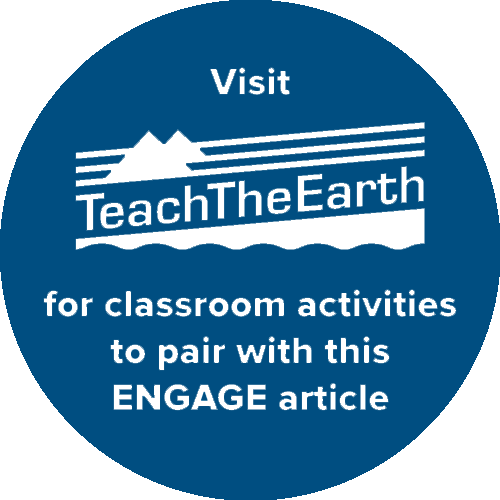Each July, the most elite cyclists in the world compete in the Tour de France, a nearly monthlong race that covers thousands of kilometers of punishing terrain in the Pyrenees and Alps.
An avid cycling fan, Utrecht University geologist Douwe van Hinsbergen had watched the race for years. Behind the zooming athletes, he said he always saw something else: a geological excursion. As TV commentators filled hours of uninterrupted live coverage with historical and cultural information about locations on the route, he wondered: Could geology have a place in these broadcasts, too?
With the help of his university and outside grants, the idea grew, and the Geo-Sports team formed. Now, Tour de France viewers in the United Kingdom and the Netherlands can catch 2-minute geology segments on broadcast television during both the men’s and women’s tours.
“It’s really, really fun,” van Hinsbergen said.
This is the second year the segments will be televised.
The Geo-Sports clips feature van Hinsbergen and Utrecht University Earth scientist Marjolein Naudé presenting the geologic history surrounding the routes. (The Tour de France and Tour de France Femmes routes differ each year.)
In 2023, the subjects covered by Geo-Sports varied widely, ranging from fossils found on the banks of the Lot River to volcanic materials used to build the striking cathedral of Notre Dame de l’Assomption in Clermont-Ferrand. This year, the team has created clips about the earthquake history of the Italian Apennine Mountains and the ways that geology influenced wine culture in the Burgundy region of France, among other topics.
Along with the broadcasts, Geo-Sports produces blogs written by geoscientists from around the world. “We try to make it a completely open platform for everybody to share their knowledge,” van Hinsbergen said. The Geo-Sports team also plans to work with secondary school teachers to adapt some of their materials for educational purposes, he said.

“It requires a unique amount of patience to construct something which is articulate and sufficiently specific to tell a story.”
It’s “brilliant” to use the Tour de France as a “meeting ground between the world of higher education and the world of regular people,” said Nick Zentner, a geologist at Central Washington University who has presented his own geology show, Nick on the Rocks, on the Public Broadcasting Service (PBS) in the United States.
Zentner said he was impressed with the warm and welcoming tone and accessible pace of the Geo-Sports video clips. “That’s a key part of any kind of science communication,” he said.
Engaging Sports Audiences
Creating clips for cycling fans requires a different approach to communication than the one van Hinsbergen normally takes. Viewers pay attention to the race broadcast because they’re interested in cycling, not necessarily in geology, van Hinsbergen said. Because of that, the content needs to be not only accurate and clear but highly interesting, uplifting, and fun, he explained.
“I watch cycling every day, and I do geology every day. And that’s what’s appreciated.”
For those reasons, van Hinsbergen and the team focus the videos on highly visible, physical examples of geological processes, said Mark Carpenter, a filmmaker, geoscience educator, and the team’s producer and director.
“It requires a unique amount of patience to construct something which is articulate and sufficiently specific to tell a story,” Carpenter said. “In a 2-minute clip, it’s all got to be at the right pitch.” As director, he watches carefully for moments that might exceed the public’s understanding or interest and guides the presenter back on track.
The team’s appreciation for cycling lends them an advantage, too: They’re able to relate the geology of each tour stage to how the cyclists might perform. “What [the audience] is tuning in for is someone who’s a cross between an interesting science journalist and someone who has a feel for bike racing,” Carpenter said. “That’s what makes us unique.”
“I’m not playing a role—I’m actually me, I actually do this,” van Hinsbergen said. “I watch cycling every day, and I do geology every day. And that’s what’s appreciated.”
—Grace van Deelen (@GVD__), Staff Writer
This news article is included in our ENGAGE resource for educators seeking science news for their classroom lessons. Browse all ENGAGE articles, and share with your fellow educators how you integrated the article into an activity in the comments section below.




